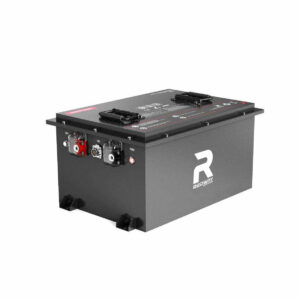What Is a Motorhome Starter Battery and How Does It Work?
A motorhome starter battery is a specialized battery designed to start the engine by delivering a high burst of power. Unlike leisure batteries, which power appliances, starter batteries prioritize short, intense energy discharges. They work by converting chemical energy into electrical energy via lead-acid or AGM technology, ensuring reliable ignition in varying conditions.
What Are the Best Types of RV Batteries for Your Needs?
How Do Motorhome Starter Batteries Differ from Leisure Batteries?
Starter batteries focus on delivering quick, high-current bursts to crank engines, while leisure batteries provide sustained lower power for appliances. Starter batteries use thinner plates for rapid energy release, whereas leisure batteries have thicker plates for deep-cycle endurance. Using a leisure battery for starting risks premature failure due to mismatched design priorities.

What Are the Key Features of a High-Quality Starter Battery?
High-quality motorhome starter batteries offer high cold-cranking amps (CCA), vibration resistance, and corrosion-proof terminals. AGM batteries excel in these areas, with sealed designs preventing leaks and maintenance-free operation. Look for brands with robust warranties and certifications like SAE or DIN, ensuring compatibility with motorhome electrical systems.
Modern starter batteries often incorporate advanced materials like calcium-alloy grids to reduce water loss and extend service life. Top-tier options feature built-in charge indicators and reinforced casing to withstand rough terrain. When comparing models, prioritize batteries with at least 800 CCA for diesel engines or 650 CCA for gasoline variants. The table below illustrates typical specifications for popular battery types:
| Battery Type | CCA Range | Warranty | Cycle Life |
|---|---|---|---|
| Standard Lead-Acid | 500-700 | 2 Years | 300 Cycles |
| AGM | 750-950 | 4 Years | 500 Cycles |
Which Factors Affect Motorhome Starter Battery Lifespan?
Lifespan depends on usage frequency, temperature extremes, and maintenance. Overcharging, deep discharges, and vibration accelerate wear. AGM batteries typically last 4–6 years, outperforming traditional lead-acid (3–5 years). Regular voltage checks (12.4–12.7V ideal) and terminal cleaning extend longevity. Avoid parasitic drains by disconnecting during storage.
How Does Cold Weather Impact Starter Battery Performance?
Cold reduces chemical reactivity, slashing CCA by 30–50% at -18°C. AGM batteries outperform flooded types in freezing conditions due to acid suspension in fiberglass mats. Use insulation blankets or heated battery boxes in winter. Keep batteries fully charged, as partial charge increases freezing risk (electrolyte freezes at -34°C when full vs. -7°C at 40%).
Battery heating pads consuming 40-60 watts can maintain optimal operating temperatures in subzero conditions. Some motorhome owners install thermal wraps combined with solar-powered ventilation to prevent condensation. Below -20°C, consider using lithium-ion jump starters as emergency backups. The following table shows cold weather performance comparisons:
| Temperature | Flooded Lead-Acid | AGM | Gel |
|---|---|---|---|
| 25°C | 100% CCA | 100% CCA | 95% CCA |
| -10°C | 65% CCA | 80% CCA | 70% CCA |
“Motorhome owners often underestimate the importance of CCA ratings. In colder climates, a battery rated 800 CCA might drop to 400 CCA, leaving you stranded. Always overspecify CCA by 20% if you camp in variable temperatures.” — John Harris, RV Electrical Systems Engineer
“AGM technology revolutionized starter batteries. Their spill-proof design and 3x faster recharge make them ideal for motorhomes. However, pairing them with outdated alternators can cause undercharging. Upgrade to a modern, AGM-compatible charging system for best results.” — Dr. Emily Tran, Battery Technology Researcher
FAQs
- Can I Use a Car Battery in My Motorhome?
- No—car batteries lack the vibration resistance and higher CCA required for heavier motorhome engines. They may fail prematurely under RV-specific stresses.
- How Often Should I Replace My Starter Battery?
- Replace every 4–6 years for AGM, 3–5 years for lead-acid. Annual voltage checks after 3 years help spot early degradation.
- Do Solar Panels Charge Starter Batteries?
- Only if wired through a dual-battery charger. Most solar systems prioritize leisure batteries; isolators prevent starter battery drainage.
